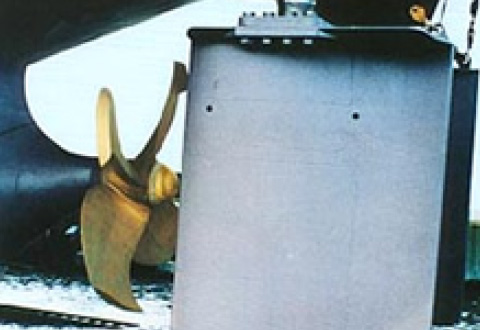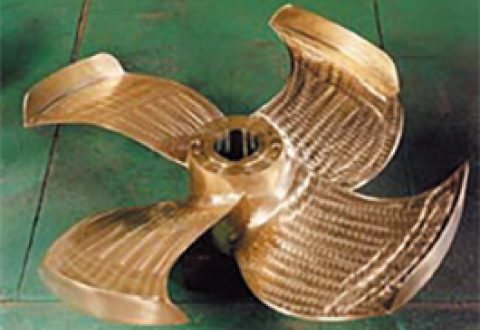Others
SISTEMAR CLT Propeller

CLT Propeller Concept
Propeller efficiency reaches the highest value when thrust generated on a propeller blade continuously increases from a boss to a tip. It is a CLT Propeller (Contracted and Loaded Tip Propeller) that this theoretical principle is realized with such technology that an end plate is provided at a blade tip.
Special Characters
A CLT Propeller possesses the following special characters:
- Higher efficiency (fuel saving by more than 10%)
- Lower optimum propeller diameter and propeller weight
- Better maneuverability
- Lower vibration and noise levels
- Less generation of cavitation
The advantages of CLT Propellers have been confirmed in full scale usage on different ship types, including tankers, cargo ships, bulk carriers, RO/RO ships, container ships, long liners and purse-seiners, etc. The installed power on the ships using CLT Propellers ranges from 100hp to 36,000hp, covering a wide range of propeller revolution rates. If a Vectwin Rudder System is employed to a ship installing a CLT Propeller, as shown in the picture, high maneuverability inherent in a Vectwin Rudder System is further promoted, in addition to the above fuel saving.
The graph in the right compares actual measurement of main engine output vs. ship speed at sea trial of “M/V Goliath” (15,000DWT cement carrier) installing a CLT Propeller, which was designed and built for the purpose of wrestling with reduction in long term operating cost, with the anticipated value in case the same ship installs a conventional propeller.
- Figure A
-
Comparison between the predicted values of ship speed & engine output and the measured values at the speed trial
CLT Propeller Vessel;M/V GOLOATH (15,000D/W Cement Carrier)
Conventional Propeller Vessel
Conventional Propeller CLT Propeller Diameter 5.60m 5.25m No.of Blade 4 4 Blade Area Ratio 0.500 0.620 Pitch Ratio 0.739 0.810 This ship (shown in the picture) includes a CLT Propeller and a Vectwin Rudder System, and the graph shows that fuel at the ship installing a CLT Propeller is economized as much as 14%, compared with the anticipated value in case the same ship installs a conventional propeller. This is within an equal fuel saving range with that obtained at other ships installing CLT Propellers.

